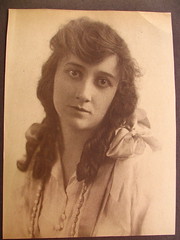Make Your Book Readers Follow the Yellow Brick Road to the End
Make Your Book Readers Follow the Yellow Brick Road to the End
The best non-fiction books have a paved road guiding readers through their book chapters. That paved road includes mile markers, exit signs and other road markers for each chapter. It’s stressful to take a journey without a clear road to travel.
Most people enjoy a journey on a paved clearly marked road. Instead of leaving your readers to follow a muddy path of disorganization through your book, use repeating elements to create a can’t-miss-it road like the yellow brick road in the ‘Wizard of Oz’ movie (1939).
In John Maxwell’s “21 Irrefutable Laws of Leadership: Follow Them and People Will Follow You” book, he skillfully uses repeating elements. These repeating elements form a paved road that leads you clearly through each chapter. Each chapter has the same basic form (road). To create chapters that guide your readers
like a yellow brick road include these 10 elements:
1. Chapter title: The title immediately followed by a subtitle emphasizes and explains its meaning.
2. Brief quote: Following the title are one to two quotes from your speeches or other authorities in your field which support the title.
3. Introduction: Each chapter should begin with 6-8 paragraphs of introduction. The introduction may include a story presenting the chapter’s main principle or underlying thesis. For short books 3 to 4 paragraphs sound great.
4. Opening statement: For example, you could open each chapter with a though provoking question or a starling statistic that show where your audience is now (before reading your book.) Many start with a short story or analogy. Whatever you open with, make sure it’s an attention getter to hook your
reader.
5. Thesis statement: Following your short introduction including your hook (opening statement), write your thesis. Make it simple; let your readers know what benefits await them if they keep reading. For example, one author friend uses sizzling bullet points to entice the reader into the chapter. You may place them right below quote or directly below introduction.
6. 7 to 10 points: Following the introduction may be lessons or tools used to achieve the goal presented in the introduction. Condense your material as you develop each point. Some lessons may require one paragraph and others may need several.
7. Case studies: Each chapter may include one or more story form case studies that support the chapter’s central idea.
8. Self-evaluation tools: The chapter may include brief questions that permit
readers to measure their progress with each of the principles described in the chapters.
9. Conclusion: Each chapter may end with four to eight paragraphs that summarize the central idea and supporting points. Don’t forget to hold the carrot out at the end: include 1-2 sentences at the end of your summary to invite your readers with benefits waiting in the next chapter.
10. Other Engagement Tools: The chapter may include other engagement tools such as worksheets, note sheets, lists that work to engage your readers and make them active participants in the book instead of just observing.
Step out of your comfort zone prepare your marketing plan, mine your existing knowledge and create a yellow brick road for each chapter, speed write your book and you’ll be surprised at what you accomplish by following the simple steps of an
easy writing program.
Earma Brown, 11 year author and business owner
helps small business owners and writers who want to write their best book now! Earma mentors other writers and business professionals through her bi-monthly ezine “iScribe.” Send any email to iscribe@bookwritinghelp.com for free 7 lesson mini-course “Jumpstart Writing Your Book” or visit her at http://www.bookwritinghelp.com
Article from articlesbase.com

